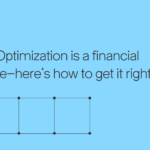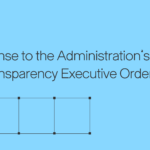I recently read Abhinav Shashank post, where he warns that markets too often prioritize cash flow over true innovation. His reminder rings especially true in healthcare where the temptation to chase short‑term returns can easily eclipse long‑term impact on patient outcomes. In my last posts, I argued that if AI can define the right care path for every patient, the rest of the system must evolve to support that. That means payment models, provider networks, and prior authorization should be designed to reinforce doing what’s clinically appropriate, not just what’s billable. Abhinav is right: we’ve lost sight of patient impact when financial performance becomes the dominant North Star. But the good news is, we’re seeing models like CMS TEAM come along that flip that script. By holding providers accountable for outcomes, not just individual services, TEAM and similar incentive programs realign financial incentives with doing the right thing for patients. We can’t settle for incremental tweaks. We need frameworks that reward performing the full care model, from procedure through recovery, efficiently and equitably. Commercial payers should take note and adopt similar models that: The next leap forward isn’t just smarter AI. It’s smarter ecosystems that hold each other accountable. Sustainable impact requires patience, courage, and a willingness to forgo short-term gains for real change. The future of care depends on those who want to build it, not just chase it.Entry #1: Realigning Incentives Around Outcomes, Not Transactions
• Guarantee availability and adherence to AI-validated care pathways,
• Treat prior authorization as care alignment, not procedure gating,
• Define networks based on who can deliver quality care in the right time window,
• Compensate providers for outcomes and preparedness, not just for action.
If AI will soon be able to assign the right care pathway for every patient, one that accounts for comorbidities, social context, and evolving clinical evidence, what role should the rest of the healthcare system play? That question becomes even more relevant as we think about payment models. For over a decade, value-based care has promised a better way. But most programs fell short. They were layered on top of fee-for-service, offering mild incentives without fundamentally shifting how care was delivered or how providers were supported. Too often, they increased administrative burden without enabling the data or flexibility providers needed to succeed. Value-based models work when they: The new CMS TEAM model, launching in 2026, takes a big step in the right direction. It’s mandatory, it holds hospitals accountable for the full cost and quality of major surgical episodes, and it aligns incentives with physicians around coordination and outcomes. TEAM represents a more modern form of bundled payment – one that rewards getting the whole episode right, not just cutting individual costs. This is the direction we need to keep moving. What TEAM introduces for Medicare, commercial payers should be adapting and scaling. Provider-led, episode-based models can create stability and predictability for health systems. When paired with AI-defined care pathways, these models can support proactive care, ensure quality, and finally start to reward the system for doing the right thing, not just the billable thing. The goal isn’t to replace fee-for-service. It’s to augment it. To put guardrails and incentives around it. To make it work better for providers and patients. This is what we are striving to do at Clarify Health Solutions. Building the AI-powered operating system for equitable distribution of premium dollars to the healthcare community.Entry #2: From Fee-for-Service to TEAM: Building Smarter Payment Models
We’ve learned some key lessons.
• Create real accountability and upside for providers,
• Use timely data that matches clinical and financial performance,
• Align with how care is actually delivered, not just how it’s billed,
• Reduce friction, not add to it.
If we know what care should look like, we should build payment models that make delivering that care easier, faster, and more sustainable.
There’s been a lot of momentum around the future of value-based care, but if we want these models to deliver on their promise, we have to design them for the realities of the providers doing the work, especially independent ones. That’s where conveners come in. In many of my recent posts, I’ve talked about a future where AI defines optimal care pathways, where prior authorization becomes pathway validation, and where payment models align incentives around outcomes. But none of this is achievable if small, independent specialist practices, who care for millions of Americans, cannot afford to participate. Convener models like those used in BPCI-A have shown that when infrastructure, analytics, capital, and risk pooling are provided at scale, independent providers can not only participate in value-based care but thrive in it. Conveners extend the reach of innovation to rural practices, solo physicians, and smaller groups who would otherwise be left behind. As CMS and CMMI refine the TEAM model and look ahead to the next generation of care delivery, we need models that support this infrastructure. That means: I believe deeply in a system that preserves independence, promotes innovation, and rewards quality. Done right, convener-based models do all three. It is time to build value-based care models that empower, not penalize, the providers closest to the patient.Entry #3: Convener Models: Making Value-Based Care Work for All Providers
• Letting conveners take on risk when independent practices can’t,
• Scaling downside risk to fit practice size and financial reality,
• Creating parity across CMMI and MSSP models so conveners aren’t disadvantaged,
• And rewarding participation with regulatory relief and meaningful non-financial incentives.
In my recent posts I argued that if AI can define the right care pathway for every patient, then everything around it should exist to help deliver that plan. That is the role of a convener. A convener is an entity that aligns payers and providers around accountable care episodes, carries or manages risk, and supplies the data, tools, and services that make the right care easier to deliver than the wrong care. What great conveners share: Where we already lead: What we are adding next, likely through partnership not build: This is how we skate to where the puck is going. Build around AI defined care pathways, make access timely, measure outcomes transparently, and pay quickly for delivery to plan. That is the convener model I believe will help hospitals excel in CMS TEAM and help commercial payers and employers finally align dollars with outcomes.Entry #4: The Convener Model: Aligning Care Around AI-Defined Pathways
• Clear risk governance and contracting authority,
• Strong finance and actuarial pricing with sensible stop loss,
• Timely data and AI that expose variation at the episode and physician level,
• Physician engagement and referral navigation tied to meaningful incentives,
• Care orchestration from hospital to home with simple, reliable workflows,
• Transparent payment operations that reconcile performance and settle fairly,
• Compliance, equity, and quality measurement that closes the loop.
• National scale episode analytics and target price modeling,
• Provider performance intelligence, network curation, and referral optimization,
• AI driven insights that highlight next best actions and predicted risk,
• Contract simulations that translate clinical change into financial impact,
• Incentive design and tracking that rewards delivery to plan.
• Deeper care coordination and monitoring that turns insights into action,
• Clinician friendly tools that embed guidance in daily workflows,
• Proven operating playbooks that help teams reduce avoidable utilization and improve experience.
If you look at where innovation and value is emerging in healthcare tech, you’ll notice a distinct “barbell” pattern. On one end are companies with first-party data dominance – EHR systems and data aggregators that capture and standardize clinical and claims records at scale. On the other end are organizations deeply embedded in care delivery – those that manage capacity, access, and payments. On the left side: Data originators On the right side: Delivery architects Clarify’s trajectory: moving toward the delivery end of the barbell This shift is about closing the digital loop from insight to impact. We are bridging predictive analytics with execution, prioritizing where the value truly converges. In a world increasingly powered by AI, both ends of the barbell matter. Data fuels intelligence. Delivery infrastructure executes it. And if we can serve as the connector, the smart hub, between these extremes indexed towards and in support of care delivery, that is where sustainable value and transformation truly reside.Entry #5: The Barbell of Value in Healthcare Tech
These include giants like Epic, which powers clinical workflows across huge swaths of U.S. hospitals, and platforms like Truveta, which aggregates de‑identified EHR data across 120 million patients to fuel research and AI‑ready analytics. These players provide raw, foundational infrastructure and unlock research, benchmarking, and model training capabilities.
Here sit hospitals, integrated delivery networks, payer-provider hybrids, and firms that orchestrate care, manage utilization, and facilitate reimbursement. They are the ones actually delivering patient care and bearing, or enabling, accountability.
Now, this is where Clarify Health Solutions is intentionally leaning: toward the care delivery side. Our analytics, rooted in episode intelligence and payer-provider insight, position us to serve as a convener of capacity aligning providers and payers around on-plan, value-based care pathways. It means stepping beyond retrospective reporting, and into facilitating and measuring delivery, all while enabling more effective payment models that reward outcomes, not just services.
Periods of disruption in healthcare are moments of reinvention. Today we face rising medical inflation across drugs and supplies, shrinking government spend that ripples into Medicaid and MA, and risk pools that are destabilizing employer plans. Physicians are working harder yet taking home less. The system is under strain, and incremental fixes will not bend the curve. At the same time, a new infrastructure is emerging. Outcome-based networks have the potential to align incentives across payers, providers, and employers, ensuring that money follows quality, not codes. They eliminate unnecessary friction, accelerate access, and create transparency around who delivers the best outcomes. This is where Clarify Health Solutions is unique. Our Clarify Atlas Platform already powers customers with national-scale intelligence on cost, quality, and utilization. It helps leaders benchmark provider performance, design networks, and build smarter payment models. And because Atlas is enriched with longitudinal journeys across 300 million lives, those models can be operationalized with a precision no other organization can offer. Having this capability is like walking into the exam room knowing the answers before the test is given. We are proud of the impact our software delivers today. And we see clearly where the market is going. The future belongs to those who can turn data into action, align incentives with outcomes, and make the right care the easiest care to deliver. This is our moment to build that future.Entry #6: Turning Disruption into Reinvention: Building Outcome-Based Networks
We are entering a transformation in Medicare where the rules of risk and reward are being rewritten. Recent risk-adjustment changes (V28 & coding intensity normalization) are starting to reduce margin buffers in Medicare Advantage. Plans that relied on aggressive documentation are seeing their paid risk scores fall even with stable patient populations. MA is not unviable yet but it is becoming less forgiving. At the same time, Centers for Medicare & Medicaid Services is shifting toward provider-led models with stronger financial accountability. ACO-REACH, MSSP, and TEAM are not just experiments. They are blueprints for what comes next: models where providers are paid for outcomes, share in risk, and partner with payers with clear settlement terms. Episodes as a payment construct are gaining momentum. More than voluntary pilots, we are seeing mandatory or quasi-mandatory models, tightened risk score floors and ceilings, and a push to shrink variation through real performance, not retrospective scoring. This isn’t about policy for policy’s sake. It creates a once-in-a-decade opening for outcome-based networks. Organizations that can combine scale, validated provider performance, trusted risk models, and the ability to operationalize pathways are going to lead. Having the right platform today means knowing the answers before the test is given.Entry #7: Episodes, Accountability, and the Transformation of Medicare
I have been thinking a lot about what “ethical erosion” looks like in healthcare, the slow shifts that compromise values, what’s decent, what’s possible. Sachin Jain writes with clarity about how even people with the best intentions slowly lose their way when the pressures stack up: regulatory demands, financial stress, burnout, and a system that rewards what is easy or billable rather than what is right. https://lnkd.in/gm_N7Q5A I have lived this kind of tension firsthand. I have known many physicians who left practice to build or join health tech, drawn by the hope of making a difference. They leave clinics or hospital rounds with urgency, armed with clinical knowledge, compassion, and a belief that change is possible. Yet over time many quietly remain bound by the inertia of “that is just the way the system works.” They push back when they have power of innovative tools to drive real change, because the weight of the day, the fear of disruption, or the lack of alignment feels overwhelming. We cannot accept that drift. In a moment when costs skyrocket, risk pools worsen, physician morale drops, it’s no longer enough to see payment evolution as nice to have. We need payment models that align incentives with outcomes, reward quality, remove barriers, restore autonomy. Insight must be paired with accountability. Data must be tied to risk, not just retrospective charts. Leaders must choose courage over comfort. The time to act is now. Having the right platform, the right structure and clarity is like knowing the answers before the test is given. Clarify Health Solutions‘ AI-powered operating system makes specialty care more predictable, accessible, and effective at scale. But we cannot achieve the impact that we all deserve without engaged clinicians leading the way!Entry #8: Confronting Ethical Erosion in Healthcare
At Clarify Health Solutions, we have been studying an interesting pattern in healthcare delivery. The average specialist treating a Medicare patient with commercial secondary insurance makes 37 different micro-decisions during an episode of care. Each decision – admission status, length of stay, discharge disposition, follow-up timing – has different financial implications depending on which contract governs payment. Yet today, at the moment of decision, providers are flying blind. They don’t know if this particular patient’s knee replacement is under TEAM’s mandatory bundle (minimize total cost), traditional Medicare (optimize DRG), or a commercial contract with specific carve-outs (maximize allowable services). The same clinical decision that generates margin under one contract creates loss under another. This is not about gaming the system. It’s about sustainability. When a health system treats the same condition 10 different ways based on 10 different payment models, but makes decisions using a single clinical protocol, they are leaving millions on the table while potentially delivering suboptimal care. The industry talks about “value-based care” as if it is one thing. But I count over 50 distinct APM models currently active, each with different rules, metrics, and incentives. Add traditional FFS, Medicare Advantage, and commercial contracts, and a single hospital might be juggling 100+ payment frameworks simultaneously. What if providers could know, at the point of care, the financial implications of each clinical decision based on the actual contracts governing that specific patient? Not to compromise care, but to optimize within clinical guidelines for sustainability. The data exists. The patterns are discoverable. The technology to synthesize contract terms with clinical pathways at scale is within reach. The question is not whether this contract-aware optimization will emerge. It’s who will build it first, and whether it will be designed to empower providers or extract from them. We see this as the natural evolution of episode analytics, from retrospective reporting to prospective guidance. The future isn’t just knowing what happened. It’s knowing what should happen next, given all constraints and incentives in play. The infrastructure for value-based care isn’t complete until providers can navigate payment complexity as easily as they navigate clinical complexity. This is the gap we empower providers to close with Clarify’s AI-powered Atlas Platform.Entry #9: How Contract-Aware Optimization Transforms Episode Analytics



